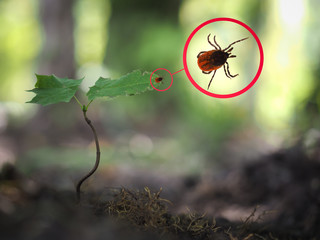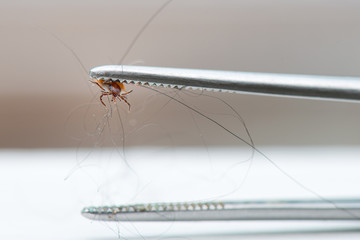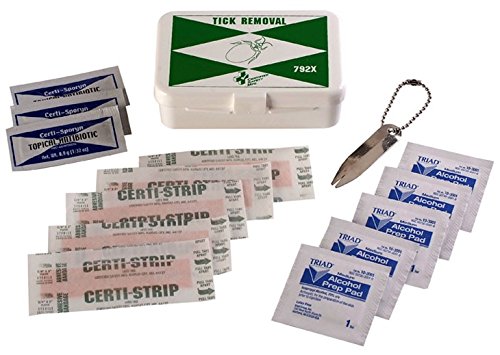Hiking through the woods, leaning against the bark of an old tree or walking through the tall grass of a prairie. These unique places hunters and anglers go are just as valuable as the species they chase. But time spent in nature can come with certain risks, and that includes a small 8-legged hitchhiker known as the tick.
According to the Centers of Disease Control and Prevention (CDC), from the year 2004 to present, there have been nine new diseases found in ticks, fleas and mosquitoes. Changes in weather patterns, as well as reforestation have caused an increase of tick species spread out over the United States. Not every tick carries a disease, but it is wise to assume they do! Know what precautions to take to keep yourself and others safe in the field.
TICK IDENTIFICATION
Know how to identify ticks in your area! Species vary depending on region due to temperatures and conditions they are adapted for. Different species are capable of carrying different pathogens. The majority of ticks will go through four different life stages: egg, larva, nymph and adult. Not every phase is capable of transmitting disease in every species. Adults are fairly easy to identify, while the smaller phases can prove challenging.
Stay up to date with the CDC’s list of tick species, identifying photographs, and the pathogens they carry.
PREVENTION
Apply insect repellent that is proven to work for ticks. Repellents that contain a minimum of 20% Deet are effective at killing these tiny pests. Purchase hunting clothes that are pre-treated with a chemical known as Permethrin, such as ElimiTick. Don’t want to buy new? Pre-treat the gear you already have. There are odorless spray options made to prevent the repellent from blowing your cover in the field , such as Sawyer Insect Repellent.

https://amzn.to/2KY3fF2
A common misconception is ticks drop from trees. Instead, a tick will wait in tall grass and shrubs for their host to brush up against them, giving them a good opportunity to hitch a ride! Tall rubber boots limit skin exposure around the ankle and calf. Go a step further and tape openings around clothes, such as your wrists and ankles. Pack along a seat to avoid sitting directly on the ground.

THE CHECK
Ticks will find optimal hiding places to attach and feed. Common areas include behind the knees, ears and elbows. Use a fine-tooth comb to work through hair, and shower as soon as possible, ideally within two hours of being outdoors. This helps remove ticks that have not yet attached.
Ticks come equipped with saliva that contains anesthetic properties, meaning the area becomes numb for the bite. This ensures the tick has a better chance of attachment and with that, a higher rate of survival. Perform a full body check for yourself (and pet if applicable) post hunt. Create a buddy system for areas that are hard to see or utilize mirrors.
Gear should also be examined closely after a hunt. Dry clothes can be thrown in the dryer on high heat and tumbled for 10 minutes to kill any remaining ticks. Wet clothes can be washed in hot water and then dried on high heat as well.

TICK REMOVAL
Tweezers are the tool of choice when it comes to tick removal. Methods such as alcohol or burning are not effective for removal and can actually be more dangerous. To begin, grasp the tick as close to the host’s skin as possible. Next, pull upward with slow, steady pressure. Resist the urge to twist or jerk which could result in separation of the mouth parts with the rest of the body. The mouth parts are responsible for disease transmission, so proper removal is important.
However, if the mouth parts remain attached, don’t panic. Clean the area thoroughly and allow the skin to heal. Don’t crush ticks with your fingers, as this can release bacteria and disease. Kill the tick in rubbing alcohol and put it in a zip-lock for identification and testing.
Also, it’s a good idea to add a tick removal kit to your hunting pack!

https://amzn.to/2G9PbEO
Tick-borne diseases can have an array of symptoms occurring a few days, weeks or even months after a bite. Symptoms can include, but are not limited to; a rash near the bite wound, flu like symptoms such as headache, fever, body aches, joint pain and even unusual bruising. If there is any concern you have contracted a tick-borne illness, contact your health provider to follow-up immediately.
The possibility of picking up this unwanted hitchhiker should not prevent time spent in the outdoors. Remember to be prepared and pay attention before and after an outing to continue to stay safe in the field!

Sources: Centers for Disease Control and Prevention 2017. Tickborne Diseases of the United States. Accessed at: https://www.cdc.gov/ticks/index.html
Post a comment
Thank you
Your post has been submitted and will be published once it has been approved.
OOPS!
Something went wrong and your post has note been submited. Please try again.










Comments (0)
Be the first to comment.